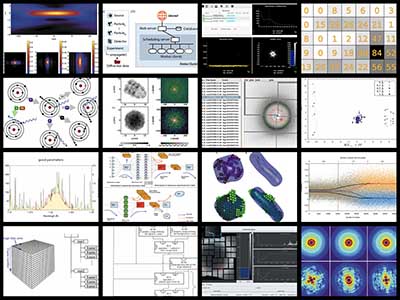A collection of computer programs for free-electron laser research
 Free Electron Lasers (FELs) are transforming photon science and its various applications. Compared to X-ray pulses from third-generation synchrotron light sources, FEL pulses are 1010 times higher in peak brightness, are 109 times higher in their coherence degeneracy parameters and provide femtosecond-attosecond time resolutions. These extraordinary parameters of FELs have stirred intense development in ultra-fast imaging science.
Free Electron Lasers (FELs) are transforming photon science and its various applications. Compared to X-ray pulses from third-generation synchrotron light sources, FEL pulses are 1010 times higher in peak brightness, are 109 times higher in their coherence degeneracy parameters and provide femtosecond-attosecond time resolutions. These extraordinary parameters of FELs have stirred intense development in ultra-fast imaging science.
However, the high repetition rate of X-ray pulses from FEL facilities leads to large volumes of experimental data, whose nature has necessitated the development of new approaches to both data classification and analysis within the specialist groups working with FELs. The latest virtual special issue of Journal of Applied Crystallography (http://journals.iucr.org/special_issues/2016/ccpfel) presents a collection of software that aims to allow a broader community of users to take advantage of the revolutionary new capabilities of FELs. Topics covered include simulation of experiments, online monitoring of data collection, selection of hits, diagnostics of data quality, data management, data analysis and structure determination for both nanocrystallography and single-particle diffractive imaging.
This virtual special issue is published simultaneously with a collection in Nature’s Scientific Data (http://www.nature.com/sdata/collections/xfel-biodata), with articles describing diffraction data obtained on a range of systems with the LCLS. All the data sets are available from the Coherent X-ray Imaging Data Bank (http://www.cxidb.org/), providing a valuable resource for researchers wanting to test software and to develop ideas, tools and procedures to meet challenges with the expected torrents of data from X-ray lasers.
This article is a short extract reprinted from an editorial published by the Journal of Applied Crystallography, a further press release can be found on SLAC National Accelerator Laboratory's website


